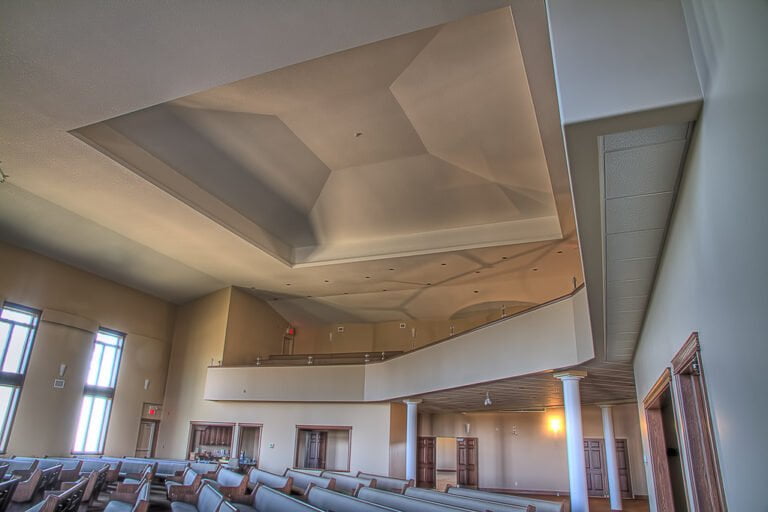Room Shape and Acoustic Design: Adapting Treatment to Different Room Configurations
Hey there! In this article, we're going to dive into the fascinating world of room shape and how it affects the way sound behaves. Trust me, it's a big deal when it comes to acoustics! We'll also explore the challenges that different room configurations can pose and talk about some nifty techniques to overcome them.
We are supported by our audience. When you purchase through links on our site, we may earn an affiliate commission, at no extra cost for you. Learn more.
So, picture this: you're setting up your dream recording studio or maybe just trying to optimize the sound quality in your living room. Well, the shape of the room you're working with can have a major impact on how the sound travels and interacts with surfaces. It's like a dance between the walls, floor, and ceiling, and we want to make sure they're all in sync to create the best sound experience possible.
Now, let's talk about those pesky irregularly shaped rooms. You know, the ones with funky angles and odd corners. They can be a real headache when it comes to acoustics. But fear not! We'll explore some out-of-the-box solutions to tackle these acoustic obstacles. Think of it as a puzzle – we just need to find the right pieces to fit together and create a harmonious sound environment.
And what about those tiny spaces that seem to suffocate the sound? Don't worry, we've got your back! We'll discuss how to optimize acoustics in smaller rooms, so you can still achieve that big sound you're aiming for. It's all about finding clever ways to manipulate the room's dimensions and strategically placing sound-absorbing materials.
So, are you ready to revolutionize your approach to room shape and acoustic design? We're here to guide you through the process and help you achieve optimal sound performance. Let's get started on this exciting journey together!
How Room Shape Impacts Acoustics
When considering the impact of room shape on acoustics, you should understand how the physical layout of a space directly affects the way sound behaves within it. Room shape plays a crucial role in determining the quality of sound in a given space. The dimensions, angles, and surfaces of a room all contribute to the way sound waves travel and interact with the environment. For instance, a rectangular room with parallel walls and a flat ceiling can create unwanted reflections and standing waves, resulting in poor sound quality. On the other hand, irregularly shaped rooms with angled surfaces can help diffuse sound and minimize unwanted echoes. By understanding how different room shapes affect acoustics, you can design innovative solutions that optimize sound quality and create immersive auditory experiences.
Understanding Different Room Configurations
To fully comprehend the impact of room shape on acoustics, it is essential for you to understand the various room configurations and how they can affect sound quality. Room configurations refer to the physical layout and dimensions of a room, including its shape, size, and architectural features. These configurations play a significant role in determining how sound waves propagate within a space, ultimately influencing the overall sound quality. For example, a rectangular room with parallel surfaces can create standing waves and resonances, leading to uneven frequency response and potential sound distortion. On the other hand, irregularly shaped rooms with non-parallel surfaces can help diffuse sound waves, reducing the impact of reflections and enhancing sound clarity. By understanding different room configurations, you can tailor acoustic treatment strategies to optimize sound quality and create immersive audio experiences.
Key Challenges in Acoustic Treatment
What are the main challenges you face when it comes to treating the acoustics of a room? When it comes to acoustic treatment, there are several key challenges that you may encounter. One challenge is optimizing the sound absorption in the room. Achieving the right balance of absorption materials to reduce unwanted reflections while maintaining a natural sound can be tricky. Another challenge is dealing with low-frequency issues. Low-frequency sound waves are more difficult to control and can cause problems such as standing waves and bass buildup. Finding the right combination of bass traps and room layout is essential to address these issues. Additionally, room shape and dimensions can pose challenges in terms of achieving even sound distribution and avoiding resonances. Careful consideration of room layout, speaker placement, and treatment options is necessary to overcome these challenges and achieve optimal acoustic performance in your space.
Tailoring Treatment Techniques to Room Shapes
One important consideration when addressing the challenges of acoustic treatment is how to tailor treatment techniques to different room shapes. The shape of a room plays a crucial role in the way sound behaves within it, and thus, the appropriate treatment techniques must be employed to optimize the acoustic environment. Rectangular rooms, for example, often suffer from excessive bass buildup due to the parallel walls, requiring bass traps to control low-frequency resonances. On the other hand, irregularly shaped rooms with non-parallel walls may introduce strong early reflections, necessitating the use of diffusers to scatter sound and create a more balanced acoustic response. In addition, triangular rooms may require a combination of bass traps and diffusers to address both bass buildup and early reflections. By understanding the unique characteristics of different room shapes and tailoring treatment techniques accordingly, optimal acoustic performance can be achieved.
Maximizing Sound Quality in Small Spaces
To maximize sound quality in small spaces, you can utilize strategic placement of absorption panels and diffusers. Absorption panels can help reduce reflections and control the sound energy within the room. By placing them strategically on walls, ceilings, and corners, you can minimize unwanted echoes and improve clarity. Diffusers, on the other hand, scatter sound waves in different directions, preventing the buildup of standing waves and creating a more balanced acoustic environment. Placing diffusers on the rear wall or in the corners can help optimize sound dispersion and enhance the overall listening experience. Additionally, consider using bass traps to address low-frequency issues in small spaces. These specialized devices absorb excessive bass energy, reducing resonances and improving the accuracy of the sound reproduction. With careful placement and utilization of these acoustic treatments, you can achieve an optimal sonic experience in even the smallest of spaces.
Overcoming Acoustic Obstacles in Irregularly Shaped Rooms
Now let's explore how you can overcome acoustic obstacles in irregularly shaped rooms by applying strategic acoustic treatments. Irregularly shaped rooms present unique challenges when it comes to achieving optimal sound quality. The non-uniform surfaces and varying angles can cause sound reflections, standing waves, and resonances that negatively impact the listening experience. To address these issues, strategic placement of acoustic treatments is essential. First, identify the primary reflection points in the room and install absorption panels to minimize reflections. Next, use diffusers to scatter sound waves and reduce the build-up of standing waves. Additionally, bass traps can be placed in corners to absorb low-frequency energy. It is crucial to carefully analyze the room's dimensions and design a customized treatment plan that optimizes sound diffusion and absorption. By implementing these strategic acoustic treatments, you can overcome the acoustic obstacles in irregularly shaped rooms and create a more immersive and balanced listening environment.
Conclusion
In conclusion, the shape of a room plays a crucial role in its acoustic design and treatment. Different room configurations present unique challenges that must be overcome to achieve optimal sound quality. By tailoring treatment techniques to the specific shape of the room, such as using appropriate absorption and diffusion materials, it is possible to maximize sound quality even in small or irregularly shaped spaces. This attention to detail is essential for creating an immersive and high-quality audio experience.






